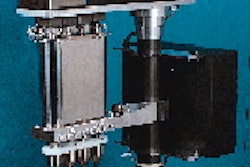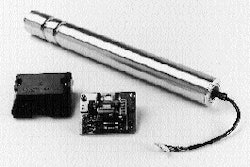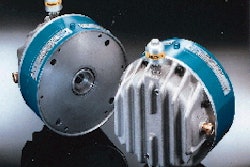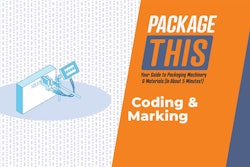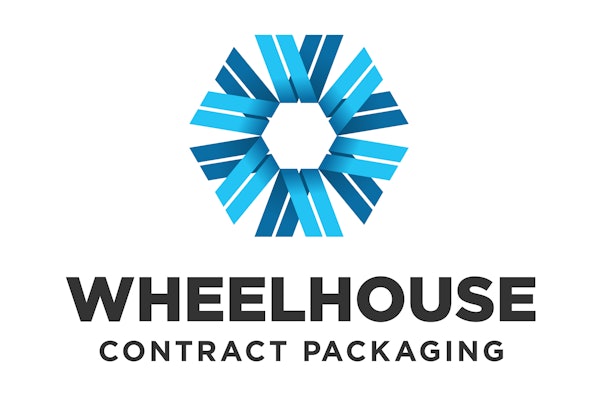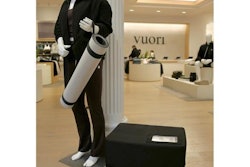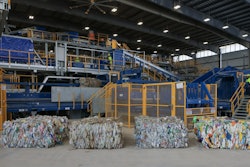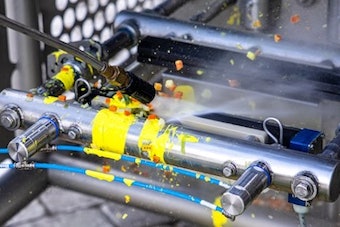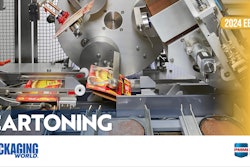Guangzhou Tak Fat Industrial Co. saw the rapid industrial growth in China's Southwest province of Guangdong as an opportunity to tap the huge factory market for pure water in a 5-gal refillable plastic bottle. To learn how to process and package water in that size, the Chinese company contacted equipment vendors in the U.S. Two years ago, the company installed a Portaplant(TM) bottling line from the Cap Snap Co. division of Portola Packaging (San Jose, CA), along with distilling equipment from Aqua Chem (Milwaukee, WI). Since then, the company has even moved into consumer sizes of bottled water, including acting as a contract packager. The U.S. connection began when Shan and Allen Cheng, sons of Tak Fat chief Hauyee Cheng, were educated in the U.S. The sons began to research a project that would put the company into the bottled water business, recognizing concerns over the safety of tap water in China. Eventually, they contacted the Intl. Bottled Water Assn. in the U.S., and the group referred them to their packaging equipment members. Tak Fat and Portola began negotiations for equipment that would allow the Chinese company to produce world-class drinking water in 5-gal bottles. Tak Fat needed the expertise of the equipment manufacturer and Portola was excited about demonstrating its packaging equipment in the Chinese market. Growth area "We decided the best place to put our new equipment into production was the Guangzhou area, because there is good transportation available there. It's close to a harbor and to Hong Kong, and it's at the center of a large population," says Shan Cheng. "This was our window of opportunity for bottled water in China, and we liked the fact that the local market itself included more than eight million consumers." Portola's Portaplant bottling line, manufactured in California by Cap Snap's equipment division, was easily capable of handling the output of two distillers, or 2군 gal/hr. Since the original 5-gal bottling line was installed, plant capacity for water distilling has expanded. And the plant has added another bottling line that fills 700-mL bottles of its own brand and 500-mL bottles under contract to companies that market to consumers, including Pepsi-Co. When the 5-gal filling line was first installed over two years ago, the market for pure water was still undeveloped. "China was still a small market for five-gallon bottles," recalls Allen Cheng, director of Tak Fat Bottled Water Co. in Hong Kong. "However, the increased concerns over health issues caused a great deal of growth in the factory five-gallon size. We're confident that the market for this bottle size will continue to grow." Because of the simplicity of the Portaplant equipment, installation and start-up went smoothly, and soon the line was operating at its full capacity of 400 bph. Line saves on labor While labor would not seem to be a major issue in a country where labor costs are low, it's always a concern when the selling price of a product is low, says Allen Cheng. The low price of the product has certainly helped it grow, but it requires the company to more closely watch its production costs. By using a single-source machinery company for all its equipment needs, Tak Fat avoided the need to select and match various machines in the packaging system. "The quality control Portola builds into its systems was important to us. The fact that the equipment closely matched the ouput of the water distillers helped make the decision easier," says Shan Cheng. "We also like the fact the system only requires one operator-and that person merely inspects and feeds empty bottles onto the beginning of the line." In the line, modules for washing, sanitizing, rinsing, filling, capping and conveying the 5-gal bottles made of refillable polycarbonate are combined in a complete system. The all-stainless-steel line is designed to occupy a minimum of floor space, and also to be efficient in the consumption of utilities. It also can easily accommodate upgrades should greater production output be required. A single control panel reveals the status on all washer, filler, capper and conveying functions, and ties in well with the controls built for the water distilling equipment. How the line works At the beginning of the line, incoming bottles are moved from one conveyor, individually inspected by the operator and placed on the conveyor leading to the washer. The PC bottles with a 55-mm finish are supplied by an unidentified source. However, since distribution is still limited in distance, as many as 50 trips are possible for the refillable bottles. After several washing, sanitizing and rinse cycles, air jets blow off excess water from the bottles before they are conveyed to the filler/capper modules. Despite the high degree of cleanliness, the company says that only about one gallon of water per bottle is consumed in the process. Because of the company's concern over purity, after distilling the Portaplant includes an ozone generator that injects ozone into the water as a final step to kill any potential bacteria just before cold filling and capping. The compact filler and capper each handles four bottles/cycle. Each cycle takes less than two min. In filling, any overflow of water is recovered and recycled. The capper module uses a hopper that holds more than 1ꯠ caps, so replenishment is infrequent. When a cap nears the capping head, a special lubricator system sprays sanitized water into the Non-Spill(TM) caps that are also provided by Portola. Once applied to the bottle, a stainless-steel pressure belt assures seating integrity as the bottle exits the line. The discharge conveyor takes the filled bottles toward the shipping area for loading into trucks. Distribution is a cost While the distilling and packaging system are both cost-effective, Tak Fat admits that distribution, even in a limited area, can be costly. In part, that's because China's road system is still a bit primitive, and local laws restrict Tak Fat to operating only 11/2-ton trucks for water delivery and return of empty bottles. "We play an important role in bringing clean water to Chinese consumers," says Shan Cheng. "Although we have targeted Guangdong province now with its 69 million people, we plan to expand to the other six states nearby. Our eventual goal is all of China. "This equipment has allowed us to enter the important five-gallon market without production problems. In over a year, we have experienced no breakdowns or line stoppages due to the equipment. "People in China are beginning to realize the importance of pure water, and the market for distilled water is growing. Even our consumer size bottle business is starting to expand."

